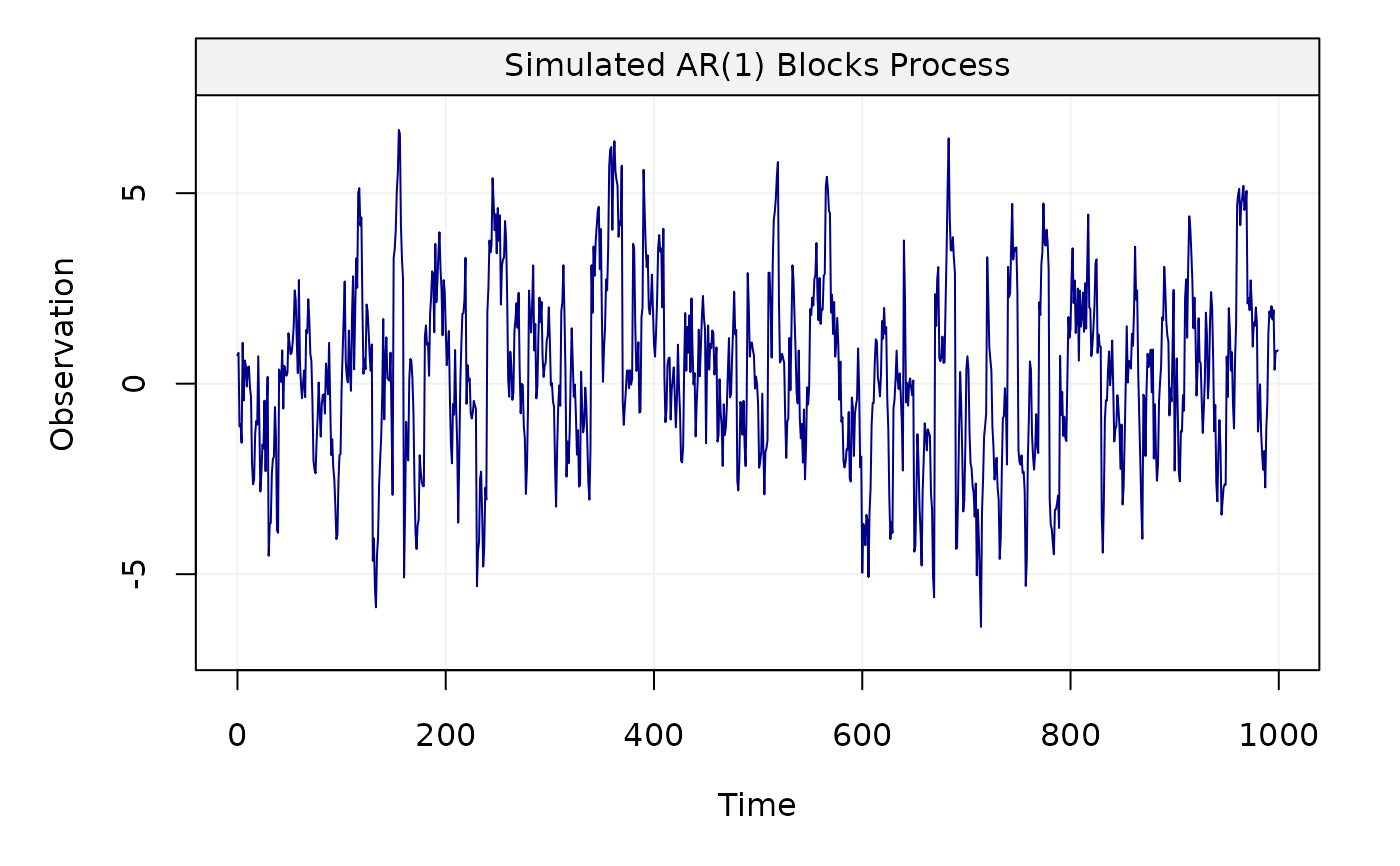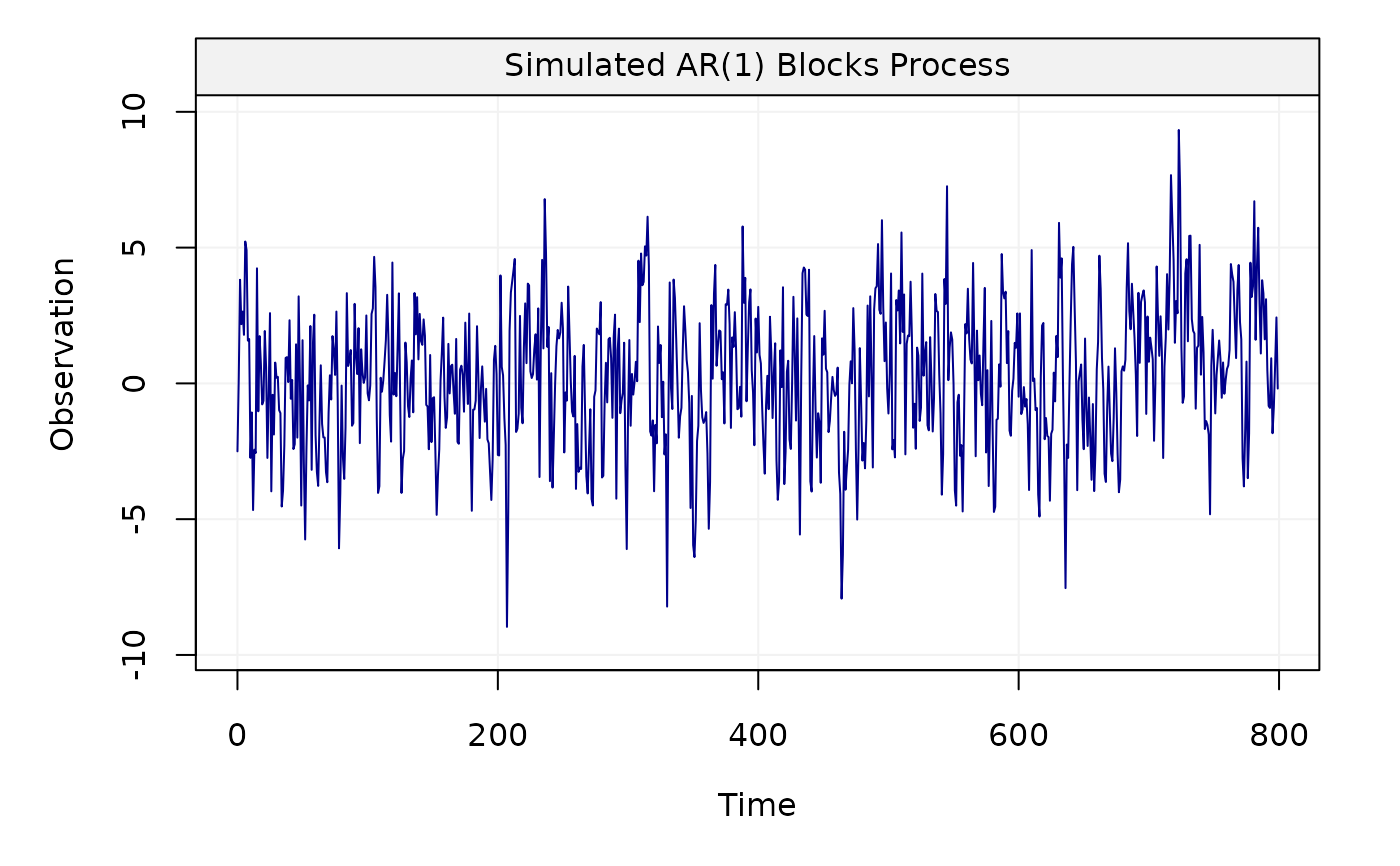This function allows us to generate a non-stationary AR(1) block process.
gen_ar1blocks(phi, sigma2, n_total, n_block, scale = 10,
title = NULL, seed = 135, ...)Arguments
- phi
A
doublevalue for the autocorrection parameter \(\phi\).- sigma2
A
doublevalue for the variance parameter \(\sigma ^2\).- n_total
An
integerindicating the length of the simulated AR(1) block process.- n_block
An
integerindicating the length of each block of the AR(1) block process.- scale
An
integerindicating the number of levels of decomposition. The default value is 10.- title
A
stringindicating the name of the time series data.- seed
An
integerdefined for simulation replication purposes.- ...
Additional parameters.
Value
A vector containing the AR(1) block process.
Note
This function generates a non-stationary AR(1) block process whose theoretical maximum overlapping allan variance (MOAV) is different from the theoretical MOAV of a stationary AR(1) process. This difference in the value of the allan variance between stationary and non-stationary processes has been shown through the calculation of the theoretical allan variance given in "A Study of the Allan Variance for Constant-Mean Non-Stationary Processes" by Xu et al. (IEEE Signal Processing Letters, 2017), preprint available: https://arxiv.org/abs/1702.07795.

